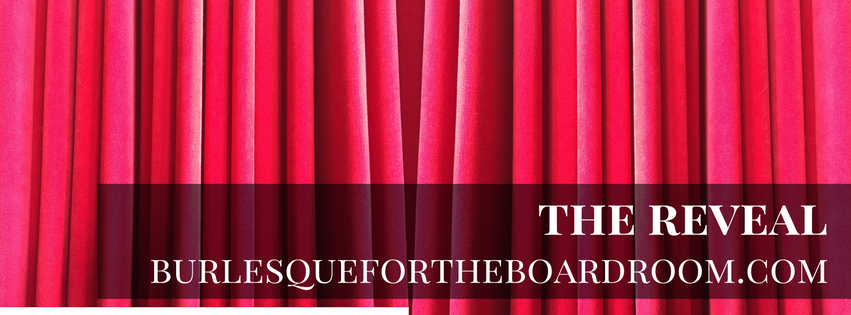Let’s talk about the elephant in the room: stripping. A large part of my burlesque performances include taking my clothes off for crowds of cheering people (most of whom are women) in a sexy, fun and liberated manner. Many people have conflicting attitudes and feelings about this. Inevitably, these people ask two big questions people ask about stripping and burlesque:
- Why do you use nudity?
- Isn’t stripping objectifying women?
- empowers people to use their bodies to tell a personal story,
- challenges the internalized and institutionalized political landscape,
- embodies musical works,
- evokes joy,
- embraces sexuality, and,
- educates audiences in an engaging, humorous, and deeply intentional way.
I do not believe that there is anything indecent, vulgar, or obscene about the female body. Women’s bodies are analyzed, criticized, modified, bought, sold, commercialized, degraded, hidden, and molested without consent. I use striptease as a social and political demonstration of agency. My performance pieces use nudity to exemplify the suffering, celebration, and pleasure related to the female body and female sexuality.
I am proud to work in a community of artists that has rigorous dialogue over the objectification of women. Today I’m going to talk about the act of stripping as it relates to revealing. If you want to know more about my perspective on whether stripping objectifies women, check out my blog.
The artfulness of striptease comes from the manner in which the performer reveals their bodies the audience, and their reason for doing so. The reveal is a key component in burlesque and a characteristic that distinguishes it from other art forms. A reveal is anytime a performer allows a new part of her or himself to be seen. A reveal can be leveraged to highlight important information, signal a key plot twist, or indicate a moment of transformation. It can also be used to evoke emotion, increase engagement, deepen connection, and build trust. What you reveal is completely up to you.
How you reveal yourself is also part of your performance, ritual, or story. You can remove an elegant dress delicately, without letting it touch the floor, or you can rip it off furiously and throw it to the ground. You can take an entire act to slowly and deliberately remove one glove, or you can wear five gloves, so that each layer reveals another beneath it. Perhaps it brings you pleasure to remove a confining bustier, or perhaps you are reluctant to leave its embrace. You could even reverse-strip, and put on layers of clothing instead of removing them.
Throughout a performance there are usually multiple ‘reveals,’ each of which allow the audience to gradually see more of the performer (their bodies, their emotions, their thoughts, stories…their truth). Part of being a great performer is revealing yourself in a way that draws audience members into your story. Part of being a trusted leader is revealing yourself in order to ignite your vision and make a call to action.
Most people I know tell me that they can't (and shouldn't) reveal their whole selves…at all…ever. We carry deeply rooted stories about how dangerous it is to show people who we really are. “But the world isn't actually like that." "I can't reveal my whole self at work." "My personal life doesn't belong in the office." “It is too soon to be that honest with someone.” “I need to focus on managing my appearance to get anywhere in this world.” "It is not safe to be who I really am."
Each of those statements holds painful truths, but just for the sake of imagination, what would happen if you showed up 5% more of your full self? Or 20%? What if you were celebrated for bringing more of who you are to what you do? What if your revelation inspired others to follow you? It might be scary, but I invite you to be bold, and to reveal a little bit more of yourself than normal this week. Even just 1% more. I want you to be a creator, not a consumer of that world, building it one step at a time. One moment at a time. Insisting on it one day at a time. Because if you don’t…who will?

 RSS Feed
RSS Feed
